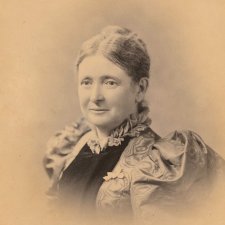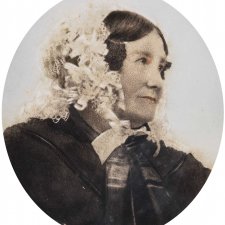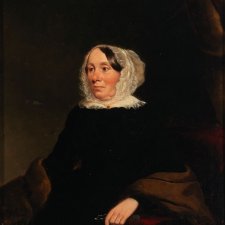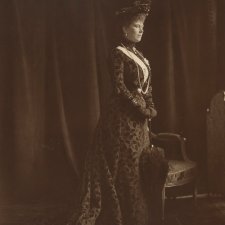
Mary Windeyer
Mary Windeyer (née Bolton, 1837-1912), women's rights campaigner, was one of the nine children of Robert Thorley Bolton, a clergyman who emigrated to New South Wales in 1839.
3 portraits in the collection

Ann Mary Windeyer
Ann Mary Windeyer (née Rudd, c. 1783–1865) arrived in Sydney in 1828 with her husband Charles Windeyer (1780–1855) and nine of their ten children.
1 portrait in the collection

Jane Windeyer
Jane Windeyer (1865–1950) was the second eldest daughter of politician and judge Sir William Charles Windeyer (1834–1897) and his wife, Mary (née Bolton, 1837–1912), a leading campaigner for women’s rights.
2 portraits in the collection

Richard Windeyer
Richard Windeyer (1806-1847), journalist, barrister and politician, was the eldest of the ten children born to Charles Windeyer and his wife Ann Mary and remained in England when the rest of his family went to New South Wales.
3 portraits in the collection

Sir William Windeyer
Sir William Windeyer (1834-1897) was a politician and judge. One of the first undergraduates to study at the University of Sydney, he developed a particular interest in education and the rights of women - he was responsible for the Married Women's Property Act of 1879, and was Founding Chairman of the university's Women's College.
4 portraits in the collection

Charles Windeyer
Charles Windeyer (1780-1855), magistrate, emigrated to Australia in 1828, having worked as a journalist, publisher and parliamentary reporter in London.
2 portraits in the collection

Maria Windeyer
Maria Windeyer (née Camfield, 1795–1878), landowner, emigrated to New South Wales in 1835 with her husband Richard, a barrister, and their infant son, William Charles.
2 portraits in the collection

Mary Rouse
Mary Hassall (nee Rouse), the eldest of Richard and Elizabeth's children, was born in England and made the sea journey to New South Wales as an infant.
2 portraits in the collection

Mary Ware
Jeremiah Ware (1792–1878) arrived in Van Diemen’s Land in 1822 with his wife, Mary (née Brooks, c.
1 portrait in the collection

Queen Mary
George Frederick Ernest Albert, The Duke of Cornwall and York and later King George V (1865-1936), was the son of Edward VII, the man for whom the Edwardian era was named.
3 portraits in the collection

Mary MacQueen
Mary MacQueen studied for a year at the George Bell School after the war, and for another year at RMIT a decade later.
2 portraits in the collection

Mary Moore
Mary Moore (b. 1957) is a West Australian portrait artist. She began formal art training in Claremont at the age of fifteen, later attending the Western Australian Institute of Technology and Royal College of Art, London.
4 portraits in the collection

Lady Mary Hay
Lady Hay, née Chalmers (c. 1806-1892) was reported at the time of her death to have been about ten years older than Hay.
1 portrait in the collection

Sister Mary Brady
Sister Mary Brady OP (1922-2014), born in Tamworth, is a self-taught painter, though she did receive critiques from Joshua Smith and Norman Carter.
1 portrait in the collection

Dame Mary Gilmore DBE
Dame Mary Gilmore DBE (1865–1962), poet, journalist and social reformer, was born near Goulburn and had an itinerant childhood as her father moved the family around New South Wales for work.
3 portraits in the collection

Mary Elizabeth Maud Chomley OBE
Mary Elizabeth Maud Chomley OBE (1872–1960) has been described as the 'divine angel of mercy' for Australian prisoners of war during the First World War.
1 portrait in the collection




